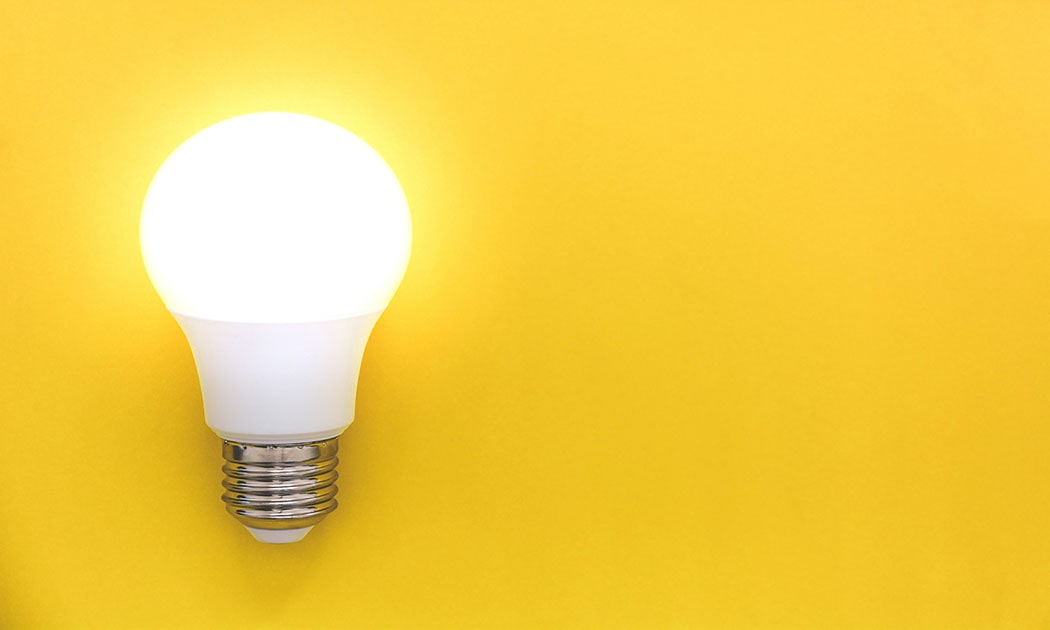Light bulbs have changed over the years, with advances in technology bringing new devices to light our homes, commercial buildings, and residential areas. What started as the standard incandescent light bulb has transformed into modern and more efficient types, such as compact fluorescent lamps (CFL) and light-emitting diodes (LED).
The more recent types, CFL and LED, are long-lasting due to their energy efficiency. Also, they are relatively more affordable than the typical incandescent bulb. For this reason, incandescent bulbs are being phased out, with an almost complete ban on their sale in 2014, that would have taken full effect in January 2020. Although this action was reversed, some states have adopted their own energy-saving initiatives, while others look towards other bulb options, mainly CFLs and LEDs.
Despite this, which bulb type reigns supreme, and what are the pros and cons of each?
CFLs: Compact Fluorescent Lights
CFLs light bulbs are different from incandescent in the way that they produce light. Incandescents run an electric current through a wire filament, while CFLs drive an electric current through a tube that produces argon and mercury vapor. This then creates ultraviolet light that transforms into visible light.
Perhaps the most significant difference between CFLs and incandescents is energy usage over time. CFLs use about 70% less energy than incandescents, they last years longer, and they cost about a dollar more per bulb.
However, one of CFLs’ biggest downsides is that they take some time to warm up and reach full brightness; therefore, they’re not ideal for places where you might want instant bright light. Also, they can’t be used with a dimmer switch.
On another note, CFLs contain mercury, a toxic heavy metal, which is harmful to your health and detrimental to the environment. Therefore, if one breaks, it has to be cleaned up quickly, safely, and disposed of in a different trash container (not household trash).
Pros
- Uses less energy than incandescent
- Produces bright light once warmed up
- Available in warm, soft, and bright white hues
Cons
- Takes some time to heat up and reach full brightness
- Contains harmful mercury
- Can’t be used with a dimmer switch.
LEDs: Light-Emitting Diodes
When first introduced to the market, LED’s were mainly found in small electronic displays, such as a clock. Up until a couple of years ago, they weren’t a popular option for household lighting.
LED light bulbs combine currents with a positive and negative charge to create light. As a result, there is a fast source of light that is reliable, dimmable, and instant.
A major benefit to LEDs is their longevity. LED light bulbs can last from 20,000 to 50,000 hours, or up to 5x longer than most bulbs on the market. Also, LEDs are more efficient, as they use about 6-10W of energy, compared to 14W for CFL’s and 60W for incandescents. So, LEDs last longer and use less energy compared to CFLs and incandescents.
Compared to CFL and incandescent, LED light bulbs are the most expensive due to their efficiency and durability. While the average cost for incandescents and CFL’s is $1-$3, LED’s average around $8 or less.
Pros:
- Lights up immediately, no need to warm up
- Stays cool during and after use
- Lasts 5x longer than CFLs
- Can be used with a dimmer switch
Cons
- Costs more than CFLs and incandescents
Which Light Bulb is the Best?
Between CFLs and LEDs, LEDs are an all-around better option. They offer superior value, and they last longer than CFLs. Since traditional incandescents are slowly phasing out, LED’s offer the same warm and soft hues that incandescents emit. In addition, dimmer switches can be used with LED’s, while CFLs can take a moment to reach full brightness. The main drawback to LEDs is their price, which can be double or triple the price of CFLs; however, their durability, efficiency, and longevity are well worth the price.



